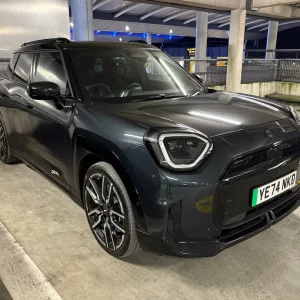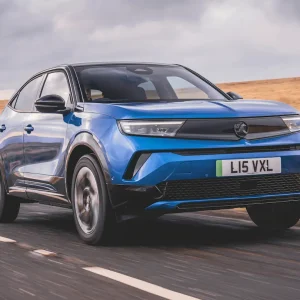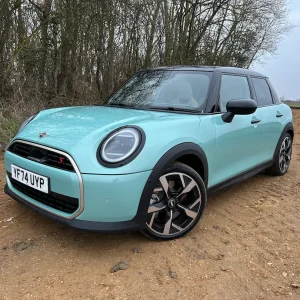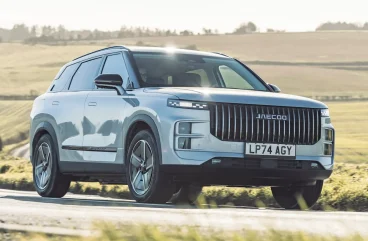
Jaecoo is half of a dual-brand approach to entering the UK market from Chinese firm Chery. Omoda, the other brand, has introduced the Omoda 5, to take on family SUV rivals such as the Kia Sportage.
The Jaecoo 7 is an SUV of a similar size, but is perhaps aiming at the more premium end of this sector, with key rivals such as the Volkswagen Tiguan.
Design and interior
Outside, the Jaecoo 7 is certainly more distinctive than the Omoda. The vertical front design features a large grille with chrome-trimmed bars. Elsewhere, there are high-set daytime running lights, with stacked headlights almost disguised as air vents in the front air dam.
At the side, we’re sure that the similarities between the Jaecoo 7 and the Range Rover Evoque and Velar are more than a coincidence. Biggest similarities are the faux clamshell bonnet, the powered pop-out door handles, and the curvy roofline. The unusual faux rear vents, below the high-set rear lights, are the only design feature that stops the Jaecoo being a Range Rover clone.
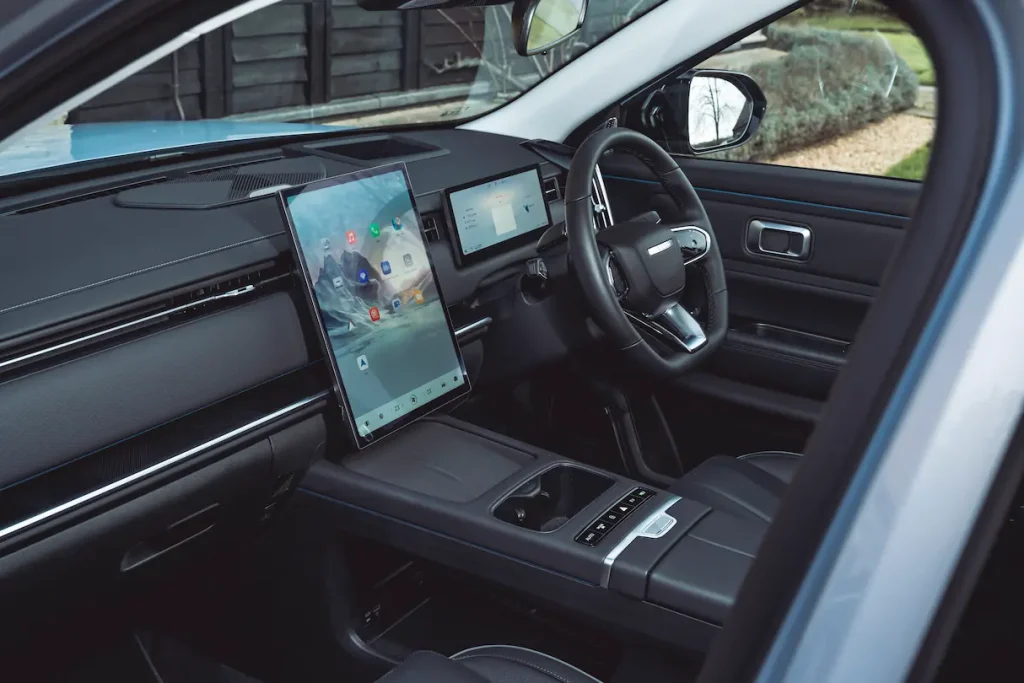
Inside, Jaecoo has been clever with the look of the plastics, and metal finishes. At first glance, the Jaecoo 7 feels very premium – like a Range Rover, or maybe a Bentley, from the look of the seats. There’s also a decent amount of interior space front and rear, plus a practical 412-litre boot, although that’s smaller than the Skoda Karoq’s 512-litre boot.
Get closer, and the interior finishes aren’t so impressive, and the Jaecoo 7 feels more built to its affordable £29,435 starting price. None of the seats are as comfortable as they look, either. The driving position is good and is dominated by the central 14.8in touchscreen (or slightly smaller 13.2in screen on Deluxe models), and the smaller 10.25in screen in front of the driver – both of which have easy to read graphics. The switchgear changes between the plug-in hybrid and petrol models are confusing.
Performance and drive
The Jaecoo 7 will be available with the choice of two engines, the first being a 1.6-litre litre turbocharged petrol, with 147hp and 203lb ft of torque, with two- or four-wheel drive, plus the version most interesting to fleets – the plug-in hybrid, which Jaecoo calls SHS (Super Hybrid System). The SHS combines a 1.5-litre TDGI petrol engine with a hybrid transmission, and high-performance lithium-ion battery pack. The result is 202hp, 229lb ft of torque, and 56 miles of EV-only range.
It doesn’t look it, but Jaecoo is also making great claims about the model’s off-road ability. The Jaecoo 7 has seven-driving modes, 600mm wading depth, an off-roading approach angle of 21 degrees, and departure angle of 29 degrees, plus a Bosch-developed ‘Integrated Power Brake’, simulating a diff lock.
On the road, we drove the two-wheel drive version first. Jaecoo’s official acceleration figure is 11.8 seconds, and it feels no faster than that – even in quicker accelerating ‘Sport’ mode. Instead, the engine just seems to get nosier – although this does quieten down at motorways speeds. Elsewhere, the suspension and standard 19in wheels, which are tuned to UK roads, do a good job of masking small road imperfections. However, anything more than that, and the J7 is surprisingly unsettled. This isn’t helped by the steering, which is very light and devoid of feel.
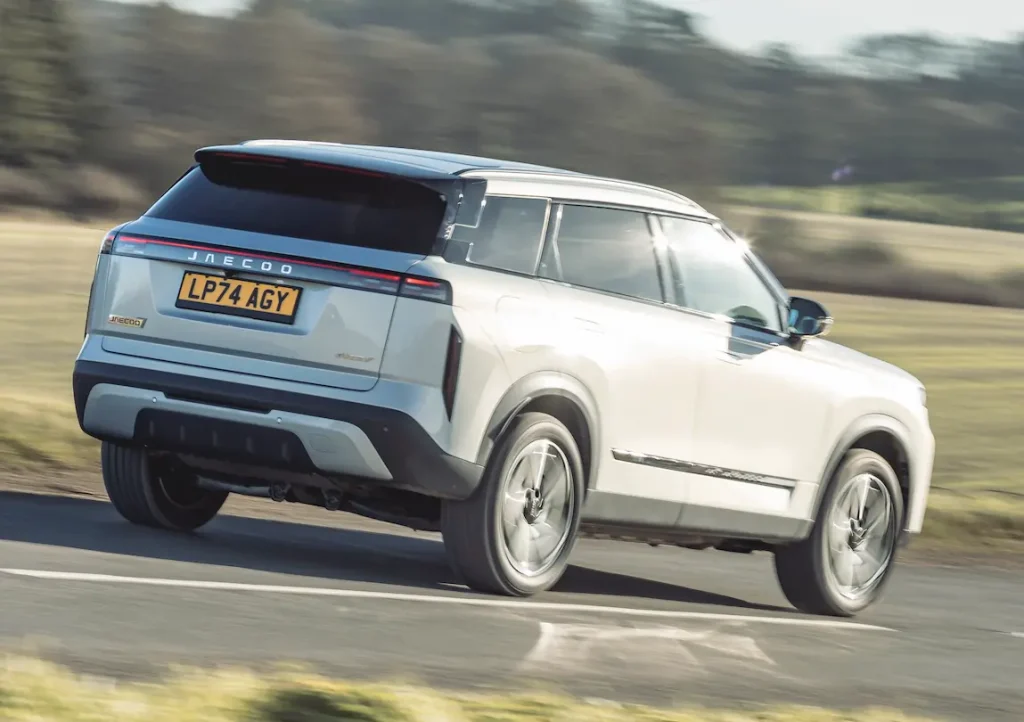
We then moved on to the four-wheel drive version, and our driving impressions are largely the same. There is more grip, but the ride is noticeably more unsettled than the two-wheel drive version. We didn’t get to try this model off-road, but its credentials suggest it would be decent.
The last Jaecoo 7 that we drove was the most fleet friendly, range-topping SHS plug-in hybrid. There is a choice of ‘EV’ and ‘HEV’ modes, and the SHS’s smooth transition between the engine and EV power impressed. However, the SHS is the most disappointing Jaecoo model to drive, with the suspension over-stiffened – probably due to the plug-in hybrid system. The result is a hard and unsettled ride. We already found the Jaecoo 7’s steering over-light and lacking in feel, but with the SHS, the engineers appear to have lightened it further. The result makes this car feel nervous when changing direction – and is even worse at speed.
The Jaecoo 7 appeals because of its affordability, long warranty, and premium look inside and out. However, its dynamics and running costs mean established rivals are a far safer bet.
Positive: Competitive pricing, smart interior design and perceived quality, well-equipped
Negative: Disappointing to drive – especially the SHS plug-in hybrid, unimpressive running costs, interior quality does not hold up to scrutiny
Standard equipment: 19in alloy wheels, full-length panoramic roof, LED daytime running lights, body-colour power door handles, synthetic leather-trimmed steering wheel and interior trim, six-speaker audio system, wireless mobile charging, 10.25in instrument cluster, 13.2in central portrait touchscreen, lane departure warning , autonomous emergency braking, panoramic view camera, keyless start, power tailgate, Normal, Eco, and Sport driving modes, adaptive cruise control.
Engines: Petrol: 147hp 1.6; Plug-in hybrid: 202hp 1.5
Equipment grades: Deluxe, Luxury
Transmissions: Seven-speed automatic (petrol), CVT auto (SHS)
| Model | Jaecoo 7 1.5 SHS Luxury |
| P11D | £35,010 |
| Residual value | 37% |
| Depreciation | £22,096 |
| Fuel | £5,797 |
| Service, maintenance and repair | TBC |
| Cost per mile | TBC |
| Fuel consumption | 403mpg |
| CO2 (BIK%) | 23g/km (8%) |
| BIK 20/40% a month | £47/£93 |
| Luggage capacity | 412 litres |
| Engine size/power | 1,499cc + electric motor/202hp |
| Score | 7/10 |

